Power up your passion: Tomorrow’s Engineers Week and the drive for diversity in engineering careers

Written by Engineering UK
EngineeringUK is a not-for-profit organisation that drives change so more young people choose engineering and technology careers. Our mission is to enable more young people from all backgrounds to be inspired, informed and progress into engineering and technology.
As Tomorrow’s Engineers Week 2024 approaches, we find ourselves at a pivotal moment to ignite excitement and purpose among young people for careers in engineering and technology. From November 11 to 15, EngineeringUK will host this nationwide celebration under the theme Power up your passion, highlighting how personal interests can lead to fulfilling and impactful careers in STEM fields. This initiative is not just about inspiring the next generation; it’s also about breaking down barriers to ensure engineering is accessible and appealing to young people from diverse backgrounds.
Understanding the importance of interest-driven careers
A recent survey conducted at the Big Bang Fair 2024 revealed that 64% of young people are driven by the idea of pursuing careers that align with their interests and passions. This statistic sheds light on a critical point: engagement and motivation in career exploration are heightened when young people can see a clear connection between their personal passions and professional opportunities. More than just a job, a career in engineering can be an avenue for self-expression, creativity, and problem-solving—qualities that resonate strongly with young minds.
However, translating this potential into reality requires us to address significant challenges and misconceptions that still exist, particularly around diversity and inclusion in engineering.
Bridging the diversity gap in engineering
The engineering sector faces a pressing diversity problem. As highlighted by the Science Education Tracker and UCAS Project Next Generation research, only 16% of girls feel that engineering is a suitable career for them, and women still make up a mere 18% of first-year engineering undergraduates. This gender disparity is compounded by the lack of visible female role models and the underrepresentation of people from various ethnic and socioeconomic backgrounds. Furthermore, many young people have limited awareness of the post-secondary pathways into engineering, with 57% of 13- to 17-year-olds admitting they know little about options like apprenticeships or technical courses.
Diversity, equity, and inclusion (DEI) are not just buzzwords; they are fundamental to creating a robust and innovative engineering workforce. The sector thrives when a multitude of perspectives comes together to tackle complex challenges. Therefore, promoting engineering careers must actively consider the experiences of underrepresented groups, including girls, ethnic minorities, disabled people, and students from lower socioeconomic backgrounds.
The role of Tomorrow’s Engineers Week
Tomorrow’s Engineers Week serves as a powerful platform to address these issues head-on by offering resources and experiences that inspire and inform. Teachers, career leaders, and students will have access to free, flexible materials that can be integrated into lessons and assemblies, making engineering careers relatable and engaging for young people.
One of the standout features this year is the Day in the life film series, which provides an authentic look at the daily work of early-career engineers from various fields. These films are designed to be flexible, fitting easily into lessons or form times, and they emphasise the real-world applications of STEM skills, particularly those that draw on creativity and problem-solving.
In addition, the Match your passion panel will bring young people face-to-face virtually with early-career engineers who can answer questions, offer tailored advice, and share how their own passions led them into engineering. This personalised approach is crucial in showing young people the diversity of pathways available and demystifying a field that is often perceived as inaccessible or irrelevant.
Supporting teachers and career leaders
Teachers and career leaders are essential allies in the effort to diversify engineering. Yet, according to EngineeringUK research, they often lack the support and resources to guide students effectively. With only 43% of young people having participated in a STEM activity beyond standard lessons and 46% of career advisers citing funding and time constraints as barriers, there is a clear need for more robust support systems.
Tomorrow’s Engineers Week aims to address these gaps by offering practical, easy-to-use resources that empower teachers. For example, lesson plans, interactive sessions, and career-focused panels can bring STEM subjects to life, making them more appealing and accessible. As Dr. Hilary Leevers, Chief Executive of EngineeringUK, points out, the week’s activities are designed to connect young people with engineers who have turned their interests into rewarding careers, inspiring students to envision their own futures in the sector.
Engineering a more inclusive future
Ultimately, initiatives like Tomorrow’s Engineers Week are about ensuring that every young person, regardless of gender, race, disability, or socioeconomic status, has the opportunity to explore engineering careers. By focusing on interest-driven engagement, the campaign makes STEM more approachable and aligns with the principles of DEI that are crucial to our education system.
For more information on how to get involved in Tomorrow’s Engineers Week, and to access these invaluable resources, visit Tomorrow’s Engineers Week and join the conversation using #TEWeek24. Let’s make engineering a field where every young person sees a place for themselves—a future powered by passion, built on diversity, and driven by a desire to shape the world.
Together, we can power up the passions of the next generation and pave the way for a more inclusive, innovative engineering landscape.
Positive Ways to Talk About Difference, Equality and Discrimination with Children

Written by Pop 'n' Olly
Pop‘n’Olly is the UK’s leading LGBT+ educational resource provider for primary aged children, parents, carers and teachers. The company's resources and books are being used in primary schools across the UK as well as globally in over 70 countries. www.popnolly.com
When I ask children to guess when same-sex marriage was introduced they come up with all sorts of wildly wrong suggestions… ‘The 1950s?’ they say and I indicate it’s a bit more recent. ‘The 1960s? The 1980s, 1990s?’ they throw out. When I tell them it was 2013 they are usually staggered – something that they’ve known all of their lives is so recent!
We live in a country that has not only legalised same-sex marriage but also has the Equality Act (2010) which protects a wide range of people of all ages, including people with different sexual orientations and trans/non-binary people. This is something to be celebrated with children. It’s not just in their school that staff encourage them to see other people as different but equal, but also in the whole of the UK – and that’s enshrined in law!
Prejudice relates to beliefs, thoughts and feelings about someone or a group of people. Prejudice is usually negative. Discrimination relates to actions against someone because of their identity or characteristics.
Discrimination is an action against someone because of their identity or characteristics. It grows out of prejudice, which is a (usually negative) belief about someone. As teachers, our job isn’t to police children’s thoughts, but instead, to help them see the wonderful variety of people who exist and help them not be afraid of these differences.
Using visuals, drop-in references, and explicit teaching we can ensure that children’s view of the world is one where there are millions of ways to be a human and some of these ways look different from them.
Celebrating differences isn’t just about helping all children feel good about themselves but it affects how we see others. When faced with differences we can help children to see those differences as strengths. Whilst we have many things in common, humans have evolved to be widely different across the globe and our experiences living different lives, both in the UK and elsewhere means we have different skills and knowledge. Sharing these differences allows us to learn from each other and to see the world through others’ eyes – sparking new thoughts, new ideas and new perspectives.
Here are some ideas you might try out with your children:
- Actively teach children about The Equality Act (2010). Use our posters, lesson plans and resources to ensure that children understand that treating people fairly and equally is part of the culture and law of the UK.
- Help children understand that people are not treated equally around the world and that change happens because of action. Examples of this might be the Stonewall Riots in the US, and the legalisation of same-sex relationships in the UK – that came about because of the work of Leo Abse MP.
- Instead of ‘Heads Down Thumbs Up’ at the end of the day, get the children to play a game where they partner up and have to find two things the same and one thing different from each other which they then share with others. Children could then try and find others who match (or are different) – or even make up their own rules for the game.
- Learn a ‘Sign of the Day/Week’ to help children understand that communication is different for different people.
- Play Paralympic sports in P.E. such as seated volleyball or goalball with the same competitive enthusiasm as other school sports (these were so popular with my Y6s!)
- Use CBBC’s ‘My Life’ series to help children learn more about other children’s lives, such as ‘When Mum Becomes Dad’ and ‘Mae’s Guide to Autism’.
- Ensure that your classroom displays represent a wide variety of people of all shapes, colours, abilities, genders, etc.
- Discuss scenarios with children about people who are experiencing discrimination. Talk through ideas on how this person may feel and what children could do if they witnessed this on the playground for example.
It is very hard to change the world, but we can make our schools somewhere where everyone is welcome and make our little bit of it more welcoming. We can help all children feel good about themselves by celebrating differences and we can help them to see that difference is not something to be afraid of, but a strength.
You can download our Discrimination, Prejudice and Equality Medium Term Plan, together with all the lesson plans, videos and resources that you need to work with your UKS2 class on this.
Challenging Hair Discrimination Through Racial Narratives, Industry Knowledge on the Economics of Hair and Counter Literacy Equality, Diversity Strategies
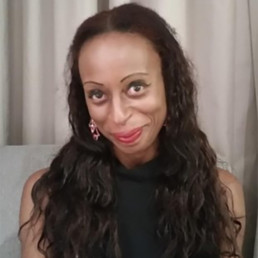
Written by Dr Pamela Odih
Pamela is a senior lecturer in Sociology within the Sociology department at Goldsmiths University of London. Her research specialises human rights communication and the significance of me/space to the regulation of subjects and construction of gendered subjectivity with specific regards to organisational analysis and educational policy.
On 27th October 2022 the Equality and Human Rights Commission (EHRC) published new guidance aimed at ensuring that: “Pupils should not be stopped from wearing their hair in natural Afro styles at school” (EHRC 2022). The guidance is supported by resources that are “endorsed by World Afro Day and the All-Party Parliamentary Group for Race Equality in Education” and are designed to assist school leaders in ensuring that “hair or hairstyle policies are not unlawfully discriminatory” (ibid.).
In October 2024, having successfully applied for a British Academy and Leverhulme Trust small grant, I began my empirical study which is entitled “Challenging Hair Discrimination Through Racial Narratives, Industry Knowledge on the Economics of Hair and Counter Literacy Equality, Diversity Strategies”. Research Focus: The proposed research is partly an impact analysis of the application of EHRC resources, into school policies and the responses of school leaders to the suitability and adaptability of these policies.
An additional focus of the study is to envisage the scope and form of guidance on anti-race-based hair discrimination that informs young people as consumer citizens in respect to their cultural heritage of hair sculpture as an expression of racial belonging. I am currently interviewing UK and USA NGOs, charities and human rights legal practitioners to ascertain the impact of their activism in respect to PSHE and citizenship studies educational policy and race equality legislation.
If you have such involvement in this subject area, I would greatly appreciate interviewing you. Please, in this regard, contact me at Goldsmiths University, where I am a Sociology Senior Lecturer. The outcome of the research is scheduled to be disseminated in academic journals and the creation of an open access teaching resource to support consumer citizenship secondary school lessons.
I am also collaborating with the spoken poet Rider Shafique to create three long-form poems for presentation at scheduled multiculturalism festivals within the academy; we also envisage co-creating and illustrating a series of children’s books. I’ll post again as the research progresses and shall provide some interim findings which I hope will be useful for your respective projects.
Reimagining Your Curriculum: Steps to Embrace Diversity and Equity
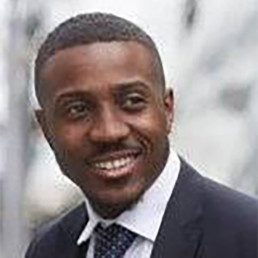
Written by Krystian McInnis
Krystian McInnis is a Religious Education consultant, advisor, and researcher specialising in decolonising and diversifying Religious Education. With a career that spans the public, private, and charity sectors, he brings extensive national and international experience in curriculum diversification and decolonisation. As the Co-Founder of Reimagining Education, Krystian is dedicated to creating a more inclusive and equitable educational system where everyone feels seen, heard, and that they belong.
In recent years, educators worldwide have begun to scrutinise their curricula for underlying biases and exclusions, calling for a wider range of diverse materials to enhance every student’s learning journey (Kara 2022). While many teachers hold a strong commitment to equality, their curricula still lack diversity, and often fail to reflect the multiplicity of perspectives that make up our increasingly globalised world. As societies grow more diverse, educational institutions face increasing pressure to adapt curricula that genuinely reflect the communities they serve. For many educators, “reimagining” the curriculum to embrace diversity and equity means moving beyond mere rhetoric or the adding of decorative slides; it requires a transformative approach that at its epicentre embraces inclusion, broadens perspectives, and fosters a deeper understanding of global issues. This ultimately brings to the forefront an essential question: how can educators reimagine and enrich their curricula to ensure all students see themselves represented, where they can feel seen, heard and believe that they belong.
The Need for Change
In May 2020, following the senseless killing of George Floyd Jr, amidst a time of isolation and solitude, many individuals began questioning not only their personal beliefs but also the societal structures that perpetuate inequality. The mere stance of not racist, no longer suffice, saw many people make an active shift towards reconsidering their position to one of anti-racist, intentionally seeking ways to disrupt and remove the barriers many face on a daily basis worldwide both from a personal and an institutional perspective.
With this being the landscape, many teachers decided they wanted to make meaningful changes and begun questioning their lessons and curriculums, exploring the inclusivity of them and to what extent they were representative of the diverse nature of the country and communities they served. Nabagereka and Melzer (2022) argue that for children and young people to fully engage with their learning, they need to see themselves reflected in what they are learning about. Furthermore, they argue that by not feeling represented in the curriculum, this can be disempowering and discouraging, negatively impacting pupil wellbeing, stopping them from achieving their full potential. Therefore, diversifying the curriculum extends beyond a mere nice to have, but rather critical for student care.
Engaging All Learners: The Imperative of an Equitable Curriculum
A diverse and inclusive curriculum plays a fundamental role in developing cultural competence, empathy, and critical thinking in students. It allows all students to see themselves and others within their learning, not only fostering a sense of belonging but also supporting with the much-needed work on social cohesion too. Banks (2015) argues that inclusivity in education not only enriches the learning experience for students from marginalised communities, but also benefits all students by broadening their worldviews and preparing them for a multicultural society. Without a deliberate effort to incorporate diverse perspectives, we risk perpetuating a curriculum that reflects an extremely narrow and predominantly Eurocentric, White male-dominated narrative.
Whilst the uptake has been slow, and efforts lagging within many institutions, the call for a more diverse curriculum has been clear. The Commission on Race and Ethnic Disparities (CRED) report recommended curriculum reforms to increase the representation of Black, Asian, and Ethnic Minority communities, arguing that more inclusive content could help reduce racial disparities (CRED, 2021). Additionally it asserted that a curricula reflecting a range of experiences, histories, and perspectives contributes to a learning environment that is more engaging, inclusive, and better prepares students for citizenship in a multicultural world.
Limitations in Traditional Curricula
It would be remiss of me however, to not state there are barriers and limitation. The first step however, in building a diverse and equitable curriculum is acknowledging the limitations in traditional approaches. Traditional curricula often exhibit an over-reliance on Western-centric authors, perspectives, and historical events, particularly within the humanities. Within this we have seen the intentional omitting of stories, contributions and voices of cultures, far too often classified as ‘other’ (Au, 2009). Therefore, a curriculum audit is a way which can identify gaps, guiding us to understand where imbalances and exclusions may exist. I would recommend that when starting an audit to critically assess a curriculum, it is vital to consider the following questions:
- Are there voices, narratives, or cultural perspectives missing from my curriculum?
- Does the curriculum offer diverse perspectives within each subject area?
- How does the material encourage students to engage critically with the world around them?
Building an Inclusive Curriculum
Creating an inclusive curriculum involves more than the mere adding of decorative diverse images, but rather relies on three core elements: representation, relevance and reflective engagement.
Representation: Critical to an inclusive curriculum is the reflection of a wide range of perspectives, including those from various racial, cultural, socioeconomic, and gender groups. It is important to remember, diversification does not remove existing literary masterpieces by White authors, nor does it erase Western history, or remove Europe from the map in geography lessons as some might suggest, but rather broadens the amount of narratives being explored. For example, presenting African nations not merely through a lens of poverty, but also in terms of their rich resources and complex histories offering a fuller picture of the individual countries. In doing so, it helps to present a balanced narrative of events allowing students to engage with an in-depth, more nuanced understanding of the world around them.
Relevance: Schemes of work should be culturally and contextually relevant to students’ lives. Whilst the communities practitioners serve now might be monocultural, it is imperative that they are preparing their students for the wider, multicultural Britain they live in, and the globalised world around them. Critical to a diverse and inclusive curriculum is one that not only engages students academically but also fosters critical consciousness, helping students to understand, question, and reshape the world they live in, allowing for them to question and formulate their own worldviews. By doing so, we can at least begin to develop a curriculum that resonates with students’ identities and experiences, enabling them to connect their learning to broader societal issues.
Reflective Engagement: As reflective practitioners, it is of upmost importance that we encourage students to reflect too, with a robust diverse curriculum allowing for this to take place. An inclusive curriculum encourages students to question dominant narratives and think critically about issues of power, privilege, and inequity. Ultimately, through reflection, we create the space for students to explore and understand their own positionality too. Within this, students move from being merely passive recipients of knowledge to active participants in uncovering and understanding complex social dynamics (Au, 2009).
Conclusion: Embracing Diversity as a Journey, Not a Destination
Creating an inclusive curriculum is not a one-time task but an ongoing journey. While some may fear the time commitment required for these changes, it’s important to remember that small steps—such as integrating diverse materials or adapting lesson plans—are all meaningful progress. By embracing diversity iteratively, we can gradually build curriculums that reflects the values of equity and inclusion.
Note, resistance from stakeholders may arise, especially when changes challenge long-standing traditions. However, professional development and collaboration with colleagues is crucial for this work to be successful, whilst also not overwhelming ourselves or the curriculums already in place.
Whilst the journey might be difficult, it is certainly a rewarding one. Through intentional and incremental work of diversifying your curriculum now, I assure you one thing: The work you do won’t just change the classroom, but will change you as a person too. As practitioners, we have an opportunity and an obligation to be part of this change, so that the teachers of tomorrow no longer have to justify the necessity of a representative curriculum and their pupils never have to suffer the pain of questioning their place in the classroom or society again. An inclusive curriculum not only enriches the educational experience but also helps students navigate a complex, interconnected world. By transforming our curricula, we take an essential step toward creating a society where all students feel seen, heard and that they belong. While the journey may be complex, the rewards—students who are more empathetic, culturally competent, and engaged global citizens – are worth it.
School Should Be Inclusive for Neurodiverse Learners: Creating a Classroom for All Minds.

Written by Nicole Sherwood
Nicole Sherwood is the Content Writer at award-winning recruitment agency Spencer Clarke Group. Spencer Clarke Group specialise in connecting teaching and support staff to mainstream and SEND schools all over the UK.
Schools can be an intimidating environment for all children and young people, and can present social and sensory challenges for those that are neurodivergent.
Providing the right support to SEND children in the classroom is crucial to their learning and can help them to reach their full potential.
According to GOV UK, it’s estimated that 15-20% of children and young people in the UK are neurodivergent. Some forms of neurodivergence include autism, dyslexia, Tourette’s syndrome and attention-deficit hyperactivity disorder, amongst many others.
Creating an inclusive environment for neurodiverse learners means being considerate of all pupils’ needs and ways of learning.
Here are three strategies Teachers can adopt in the classroom to ensure it is a welcoming and inclusive environment for neurodiverse learners.
- Change your thinking and your approach.
- Empower neurodivergent children and young people.
- Teach students about neurodiversity.
Change your thinking and your approach
Just as one approach doesn’t fit all, children who are neurodivergent also require different and individual teaching strategies and shouldn’t be categorised according to their neurodiversity. Consider teaching as more than just educating, but rather as making meaningful connections and empowering students.
Get to know your students and change your approach to learning, as every student requires different techniques and styles of learning to thrive and feel comfortable. Give pupils the opportunity to work in a quiet area if they prefer, and work with pupils to meet their own specific needs and build on their strengths.
Neurodiverse learners benefit from having options as they can ensure inclusivity and security as well as offer new experiences and opportunities to learn and grow.
Empower neurodivergent children and young people
Empowering neurodivergent children and young people is crucial to their learning and growth as it can help them develop a positive self-image, feel confident and thrive in an inclusive environment.
Be sure not to exclude, overcompensate or treat those who are neurodivergent differently to other students. Listen to neurodivergent pupils and use this feedback to ensure your school policies reflect these views. Follow pupils’ lead to help them feel safe, included and celebrated for their achievements.
It’s important to empower children and young people in the classroom so they can feel safe, act authentically and thrive in the classroom. Some neurodivergent pupils’ might struggle to take initiative and it’s important that Teachers give each child the opportunity and the means to be in charge of their own learning.
Support students’ sense of self and development by encouraging them to thrive and embrace their differences. Be patient, provide students with options and alternatives and encourage students to ask questions and be vocal about their decisions.
Teach students about neurodiversity
All students make up the diversity of a classroom and creating an inclusive environment for all learners begins with awareness. The representation of neurodivergent children in the classroom promotes equality and equity and it’s important to consider how you teach and address neurodiversity in the classroom.
Educate students to make everyone aware of the different types of neurodiversity and how it can affect people’s learning and school experience. Make all students aware of the different learners in the classroom by acknowledging and celebrating the strengths and talents of neurodivergent children in your school community.
By embracing neurodiversity and differences in the classroom all children can understand how accommodations for neurodivergent children help to facilitate learning and engagement. This can also help with different types of engagement in the future in regards to cultural and social differences.
The theme behind my Children’s book – Zeb, Jet and the Ice-Cream Calamity.
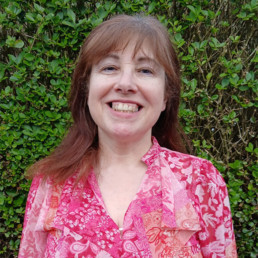
Written by Mirabel Lavelle
Mirabel is a qualified Teaching and Learning Coach, Creative Writing Lecturer, Allergy Awareness Advocate and Author of: Zeb, Jet and the Ice-Cream Calamity. An adventure story aimed at raising food allergy safety awareness. She is also the founder of: writebymirabel.co.uk – Crafting stories: where every voice counts and allergies matter. a website dedicated to the art of crafting stories, especially those that help raise awareness to disability, equity and inclusion.
I am a teacher and grandmother who loves stories. Two of my grandchildren carry auto-injector pens because of food allergies. One day, the older of the two asked me if I would write a story book about allergy. Hence, Jet, Zeb and the Ice-Cream Calamity.
I want to encourage the reader to learn about allergy, to become actively aware of how to safeguard and to include children with food allergies at social events such as Easter egg hunts, trick or treating, and parties without the fear of reaction to food – or worse still – anaphylaxis. I would like the reader to ask:
‘How can we plan a party that children with food allergies can safely enjoy?’
Allergic disease is a disease of the immune system, and it is the fastest growing disease among children in the UK. This condition impairs the sufferer on a day-to-day basis, in many different ways.
Sufferers cannot eat the same food as everyone else unless it has been prepared especially. This has substantial implications. For example, in school during lunchtimes a child may be asked to sit at a separate table because of their food allergies. Outside of school a child may be excluded from social events that centre around food because of a nervous adult.
The culture this creates is that if a child is different in any way, for example by having a dietary requirement, then society will exclude them. New studies are showing certain children, who have experienced anaphylaxis, to display allergy related anxieties and behaviours that are similar to PTSD.
This is why I want to raise food allergy safety awareness. I want to educate so that we can eradicate food cross contamination. This way we can significantly reduce allergy anxiety and promote inclusion at all times.
My story book features a relatable fox cub (Zeb) and playful puppy (Jet) as characters, rather than humans, because of the subject matter. Jet has a food allergy and when Zeb meets Jet, he learns how to be allergy safe aware. This exciting adventure encourages children to want to help Jet by telling others about how to keep him safe. It is an adventure that celebrates diversity, equity and inclusion.
I reinforced my message by creating a joyous song. The chorus shows how to significantly minimise food cross contamination. Children love music, the catchy chorus carries the central and crucial message of the book.
This book invites children to learn about allergy safeguarding by finding out about simple yet responsible behaviour around allergic kids. One example is not to leave wrappers, which may contain allergens, lying around but to bin them responsibly. My message to the reader is about building a society of caring individuals so that no one has to get sick because of the carelessness of others.
I added differentiated tasks to encourage readers to ask more questions about allergy. I want children to have fun whilst they learn. After all, it is through stories and through education and by putting ourselves in someone else’s shoes that we become more understanding of others.
Going into schools to deliver allergy safety events is a very rewarding experience for me because of the positive response from children and staff. They are providing me with a wealth of exciting ideas on how to continue taking my campaign of safe allergy inclusion, forward.
When I first wrote the book, I wanted it to be a key educational resource as well as an entertaining adventure. I aimed to provide schools and communities a point of reference that raises awareness and encourages people to want to know more about allergies and their impact. I needed to ensure that allergy sufferers are included in all activities that everyone their age enjoys. Since taking the book and the presentation into schools and libraries, it continues to inspire a range of immersive activities such as art projects, drama, puppet shows and animation.
This book highlights equity and the tasks that follow the story are focussed on finding ways that are fair and inclusive for Jet. The story affords time to explore feelings, such as Zeb’s feelings after Jet got sick. It creates an opportunity for discussion, for thinking, for empathising, and for bringing about positive change.
Useful Links:
The Natasha Allergy Research Foundation (narf.org.uk)
The Benedict Blythe Foundation Allergy & Education Foundation | Benedict Blythe Foundation
The Sadie Bristow Foundation: Don’t Be Afraid to Be Great
The one human skill that powers all others: Is empathy the secret to wellbeing, inclusion & the future of work?

Written by Ed Kirwan
Ed Kirwan is the Founder and CEO of Empathy Studios, an organisation using film to develop empathy, a vital human skill. A former science teacher and Head of Chemistry, Ed transitioned into filmmaking in 2018, launching The Empathy Programme in 2020. Ed also founded Empathy Week, the world’s largest empathy festival, reaching over 1.3 million students in 50 countries.
As an educator, you’re often faced with student situations you can’t anticipate. Those situations are almost always personal, nuanced and highly-specific to that individual. They require a human response. They require empathy.
Empathy is the skill to understand another and the ability to create space for someone to reveal their authentic self, whilst reserving judgement.
Empathy is no longer merely a nice-to-have; it’s essential and has been listed as one of the most vital skills for the 21st century. Is vital for conflict resolution, it helps increase creativity) and can even reduce cyberbullying. Empathy can be passed from generation to generation View here and so teaching it has far-reaching benefits beyond the immediate impact.
Neighbourhood diversity has doubled on average in the UK since 2001 and, in some towns, it has increased ten fold. This should be a wonderful opportunity of celebration and learning, yet we know from the UK riots this summer that cohesion and community isn’t a given. It also doesn’t come about from simply teaching students to ‘be kind’ and ‘be tolerant’. Empathy sits at the foundation of the human skills that enable inclusion, communication and adaptability that are crucial in our globalised world.
Since 2020, my team and I have been helping educators give their students the tools needed to develop empathy – and we continuously research the impact, in partnership with Cambridge University . In these last five years we’ve learnt a lot. Our Empathy Programme has engaged 175,000 students and our annual festival, Empathy Week, has reached over 1.3 million students in 50+ countries. But for me, it all started in the classroom.
At the age of 22, I began teaching science in North London at a co-ed state school – something I deeply loved. It taught me a lot about privilege, society and the importance of empathy. It also taught me that humans are complex social and emotional beings.
Much of my motivation comes from having taught the infamous (self-named) “U-gang” – a group of 24 boys who all received ‘U’ grades in their christmas mock exams.
They had a lot of anger and lacked motivation. In their eyes, they were already destined to be a failure. They hadn’t yet learnt how to communicate their needs effectively, or they were misunderstood – in all honesty I think it was both things at once. As I got to know them I realised they were, quite simply, scared young men.
Teaching that group was one of the most rewarding experiences in my teaching career. None of the “U-gang” ended up with a U grade, despite one of my students missing his Chemistry exam because he was in a police cell. They all passed.
Looking back now it’s not because I was the best science teacher, but because I took a genuine interest in them as individuals. Who did they live with at home? What hobbies did they have? What did they aspire to be? What made them tick?
I took as many steps as possible to understand and develop a healthy rapport with the class, including delivering science classes on the basketball court and shifting our practical lessons to be less daunting. I was using empathy, I just didn’t have language for what I was doing yet.
Empathy underpins everything needed to make a child feel seen, heard and understood. Everything that’s needed to make someone feel safe and like they belong and that’s what we’re all really after isn’t it? To belong?
Empathy is not a value or a trait. It is a skill which can be actioned and, crucially, taught. Our pilot research with Cambridge University explores the impact of our term long programme to develop empathy skills in 5-18 year olds. Teachers report a measurable impact to empathy levels – and excitingly they also report improvements to behaviour and increased global citizenship after completing the programme.
Crucially there are three drivers of success that manage to build empathy successfully:
1) Engage and entertain students – A lot of education content can be boring and only serves to transfer information rather than ignite genuine conversation and learning. Our programme and films are a trojan horse for empathy building. They excite students from the very start and in turn lead to conversations and connection.
2) Increase the amount & diversity of experiences of students – We can’t all fly around the world, but we can allow students to experience real life stories through film. From Lipa who talks about the right to wear a Hijab in sport to a Mexican paralympian who is now giving back,, students can gain insight into themes such as culture & identity, disability, bereavement, sustainability & mental health.
3) Skills building can’t be a one-off – Empathy is a muscle and the best results come with sustained and long-term intervention. It’s the schools that build empathy into a golden thread of their school that are seeing the benefits.
As educators and teachers, we need more support to help equip young people with the human skills they need. As the world becomes ever more connected and AI transforms the way we live and work together, it is our human relationships, adaptability and resilience that will allow us to thrive – and empathy is the one human skill at the foundation of this.
Talking Race and Racism with Children - when do we start?
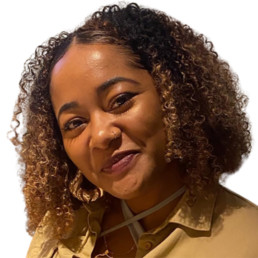
Written by Omena Osivwemu
Former Primary Teacher, Humanities Lead, Researcher. Author of 'Decolonising the Curriculum: A Comparative Case-Study of Black Learner and Educator Perspectives and Experience in London and Johannesburg' in The BERA Guide to Decolonising the Curriculum.
This question has played on my mind for a while; at a conference of educators reckoning with race, a Black senior leader who is also a parent asked “when is the right time to talk to my children about race?” This stuck with me and the academic on the panel looked to me, as an experienced Primary School teacher to respond.
Given my lived experience growing up Black in Northern England, training and teaching across the North and the Midlands, the answer seemed obvious to me.
In short- right away! As soon as children are absorbing language, learning values and copying behaviours.
As soon as we teach toddlers what is a boy and what is a girl, that is the social construction of gender- even if you opt for a more gender-neutral or fluid approach- that is still teaching them difference. When we teach children to share; be kind; tell the truth etc., all values we deem to be ‘right’, we should also be teaching them that sometimes not everyone will be kind, share or tell the truth. At times this can be due to our differences. But difference is a wonderful, necessary part of life!
Of course, discussions should be age-appropriate in language children understand and use. ‘Sulwe’ by Lupito Nyong’o is a beautiful book, aimed at young children and explores themes of ‘race’ and colourism. Now, there is a wonderful array of diverse books available for all ages! As children get older, we can then build on their racial literacy, empowering them to make some sense of the social construction that is ‘race’. For adults, I would recommend ‘How to raise an anti-racist’ by Ibram X. Kendi as a great place to start.
As soon as we read traditional tales to children, let them watch YouTube, TV or films, we are passing on messages about society, how people interact and what is deemed ‘right’ and ‘wrong’. When children can describe something as red, green, blue, black and white; they can and will use this language to describe differences between people. It may not be ‘accurate’ to the adult lens, for instance as a young child in a Black, mixed family, I would draw my father’s dark brown skin as purple and my mother’s very fair brown skin as pink.
One of my earliest memories as a 4 year old (contextualised by my mother’s memory) at a mostly White Nursery, was feeling different. Too brown, with hair that was too dark and curly, and eyes that were too dark, compared to the teachers, other children and most importantly the blonde, blue-eyed dolls which I adored! Then, when the teachers with good intentions, changed the play to ‘Curlilocks’ so that I could play the character Goldilocks, I knew I wasn’t ‘right’- I didn’t fit. If Black and brown children aren’t too young to experience or witness racialisation or racism, nobody else is too young to learn about ‘race’ and racism.
Later on during undergrad’, volunteering in local primary schools in Northern Lancashire, as soon as I walked into classrooms, children as young as 4 would stare wide-eyed and mutter under their breath “she’s Black!”. Throughout my teaching career across England and Spain, most times I was the only Black teacher children had seen. The responses have varied from positive, such as expressing their love for my curly hair, inquisitive questions and collaborative cultural exchange. To the negative, for example young children avoiding touching my skin when I gave them something, or 6 year olds ignoring me as though they didn’t understand my English, because as one boy put it, I was “from Africa”.
I recognise that in Black and brown majority spaces like London, experiences such as mine may be less common. However, if parents, the media, film, books etc. are socialising children as young as 3 and 4 to understand brown skin, or Blackness, or religious dress, or simply human difference such as accents, as ‘bad’ or negative, then we too should be equipping our children with the understanding that such a belief system (white supremacy) exists and continues to prevail- albeit gently. We should be uplifting Global Majority children to feel proud of their cultural and ethnic backgrounds, histories and identities. We should help children to contextualise what they are seeing and embolden them to have high self-esteem and confidence when facing barriers/ discrimination.
In the same way that we acknowledge teaching children ‘stranger danger’, online safety, how to respond to bullying, physical and mental wellbeing, and healthy relationships in order to protect them from harm and prepare them to safeguard themselves; we should also be empowering all children with the language and understanding to know when discrimination and racism are happening (unfairness / unkindness in children’s terms). In the same way that far-right rioters and sympathisers have taught their children, as we saw this summer, to attack, abuse and harass Black, brown, migrant, Muslim peoples; we too should be teaching our children from early why it is happening and how they can respond.
Cancer helped my Autistic daughter to survive school
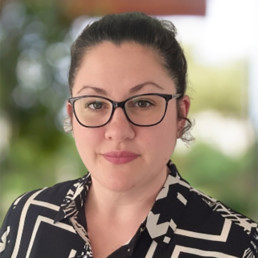
Written by Joanne Robinson
Joanne Robinson, BA, MA, PGCE, FCCT, is the Director for Training and Development at TeachUp, a company specialising in professional development for teachers in the UK and internationally. She has also led a number of teacher training programmes, including an iPGCE and an MA in Education with Pedagogy. Prior to this, she taught in secondary education for 16 years. She is keen to promote inclusive education that centres upon the wellbeing and autonomy of teachers as well as pupils.
Making the statement that cancer helped my daughter to survive school sounds quite alarming, but it is something that she and I have discussed at length over the years since this happened to her.
This blog is written with her permission. She is now 26 years old and thriving, so this did occur some time ago. However, the reason I’m writing this now is that I believe it is still resonant for school practices today.
Abigail was diagnosed with leukaemia in January 2011. She was 12 years old at the time, which is quite unusual for this type of cancer. She had just started Year 8 in the school I was also teaching at. Abi had already been diagnosed with Autism just before beginning in secondary. Since then, she has had a further diagnosis of ADHD.
Treatment for leukaemia was gruelling, with two bouts of intensive chemotherapy in the first nine months followed by two years of maintenance chemo. This was the standard protocol for girls back then, although it may have changed as cancer treatments evolve rapidly, thanks to fantastic research trials.
Children may experience some infection, but our consultant advised that life should be normal during the maintenance phase of treatment. However, because Abi was becoming a teenager and experiencing hormonal changes, we found that this wasn’t the case. In the end, she was hospitalised around ten times during her care. Some of those stays were over a month in length and at one, terrifying, point, she contracted neutropenic sepsis and was lucky to have survived.
Abi’s attendance in school was understandably low. It was a really hard two years and, in the end, she dropped back a year in order to regain some of the lost time.
School was brilliant with her. They provided her with a reduced timetable. Because she had very low immunity and her platelet levels meant she was vulnerable to bleeding from knocks and bruises, she was able to spend her breaks in the SEND inclusion room.
Before cancer, Abi was struggling in school because of the difficulties that she had due to her Autism. She found the high school environment very overwhelming to navigate. She was experiencing frequent meltdowns at home. During treatment, she was able to take school at an easier pace, spending time having respite in the SEND room and not forced to interact with other pupils at breaks unless she chose to. Suddenly, her school life was manageable for her.
After treatment ended, Abi’s needs were well-known. Chemotherapy has long-term effects on energy, so school was happy to continue with a reduced timetable and flexibility in allowing Abi breaks when she needed them. She was also in regular attendance in the SEND room. These things were there for her without her having to ask for them – self advocacy can be hard for any child, let alone those with communication difficulties (many time-out systems put the onus on the student to instigate them, which means they are never used).
By the time Abi reached her GCSEs, she did astonishingly well. She was then able to use a similar approach to her time in the school’s Sixth Form.
Abi has since said to me that the accommodations that school made for her cancer were what made it possible for her to complete her studies as a neurodivergent student. In my own teaching experience, I had witnessed many neurodivergent children being unable to cope by the time they reached GCSE: the sheer energy it took to mask every day through this stressful time, repressing behaviours that might be seen as strange by others, would result in them refusing to attend.
There is a lesson here. We have to adapt school practice to accommodate the fluctuating energy levels that occur with neurodivergence. These pupils are often academically capable and should be attaining great outcomes, taking those first steps into fulfilling adult lives. Instead, they are burning out in their teens. Simple changes can adjust the classroom to make it more accessible, and enabling respite or shorter days could be the difference between a neurodivergent child completing school or not.
It should not take a serious illness to ensure proper accommodations are made: neurodivergence is a disability that needs reasonable adjustment from the outset. I think the tide is turning and there is great work being done to raise awareness, but we have a way to go before we can claim with certainty that education is equitable for neurodivergent students.
Supporting the Emotional Needs of Young People in Schools
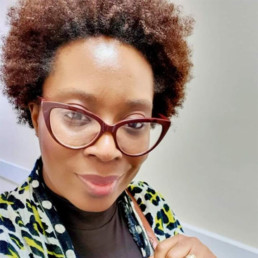
Written by Bianca Chappell
Bianca Chappell is a Mental Health Strategic Lead, Cognitive Behavioural Coach and Mental Health First Aider.
As an educationalist with over 15 years of experience in secondary education, spanning roles such as Head of Year and Head of Alternative Education in both the UK and New York, and as a certified master NLP and Cognitive Behavioural Coach, I am passionate about providing opportunities for young people to thrive and excel in education by meeting their pastoral and emotional needs.
The Importance of Emotional Support in Schools
The ongoing challenges with mental health, exacerbated by lockdowns and social isolation, have brought to light the critical importance of providing a platform to support the emotional needs of young people in schools. The pandemic has exposed and intensified mental health issues, with 1 in 6 children now experiencing a mental health problem, up from 1 in 9 in 2017. Furthermore, approximately 1 in 10 students have yet to return to school due to poor mental health and social anxiety since lockdown.
Emotional support is a crucial part of the wider pastoral offer in education. It goes beyond academics, encompassing the well-being of students, which in turn supports their overall development. By fostering positive well-being and emotional support, schools can significantly improve students’ mental health, self-worth, and confidence.
The Impact of Emotional Support on Academic and Personal Development
Providing robust emotional support for young people has a profound impact not only on their mental health but also on their academic performance and behavior. When students feel supported emotionally, they are more likely to attend school regularly, engage in their studies, and achieve higher academic outcomes. In fact, research indicates that students who receive adequate emotional support are more likely to pass their GCSEs and embark on a higher education journey, ultimately leading to a robust career path.
Supporting emotional well-being also contributes to better behavior in school. Students who feel understood and supported are less likely to act out and more likely to exhibit positive behavior. This creates a conducive learning environment where all students can thrive.
A Holistic Approach to Education
My dedication to supporting young people in education has led me to write, implement, and project manage the delivery of a holistic curriculum that addresses the emotional needs of students. This comprehensive approach ensures that students receive the support they need to navigate adolescence with calm, clarity, and confidence. I believe that supporting the emotional well-being of students is as important as safeguarding, and it is our duty of care as educationalists to provide robust platforms of support.
Creating an emotionally healthy school environment is not just a responsibility but a commitment to the future of our young people. By expanding our pastoral offer and integrating emotional support into the fabric of our educational systems, we can help students flourish both academically and personally.
Can you make a difference?
As educators, parents, and community members, it is imperative that we respond to the urgent need to ensure our schools are equipped to support the emotional health of our students. Let’s commit to creating emotionally healthy schools where every young person has the opportunity to thrive.
Join me in making this vision a reality. Together, we can expand our pastoral offer, support the emotional needs of our students, and build a brighter future for the next generation.
For more insights and strategies on supporting emotional well-being in schools, feel free to reach out or follow my work. Let’s make a difference in the lives of our young people.

